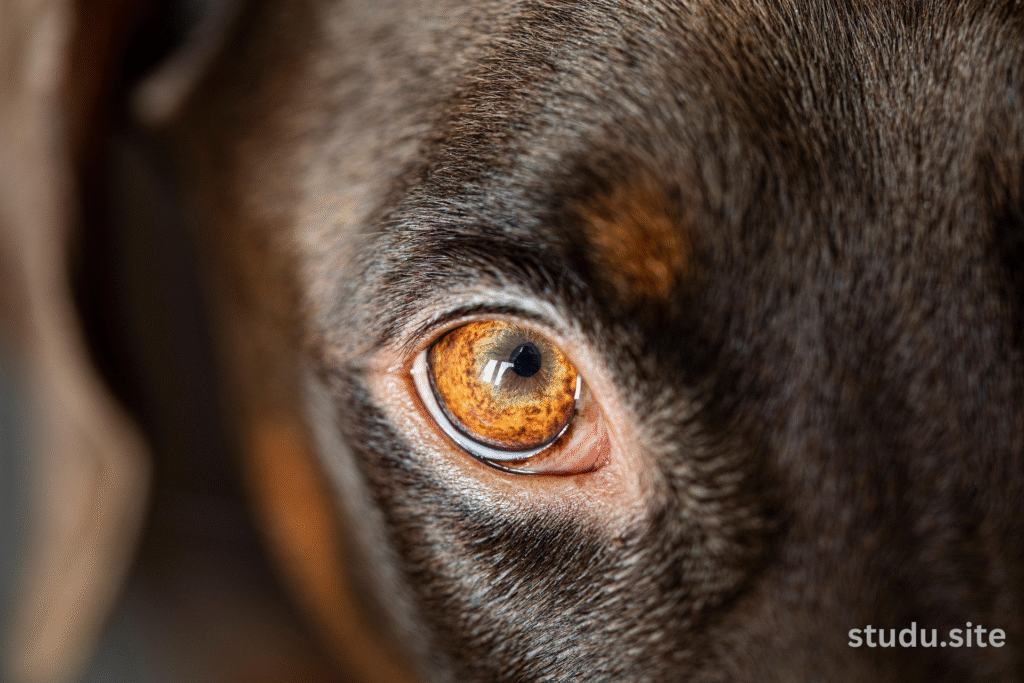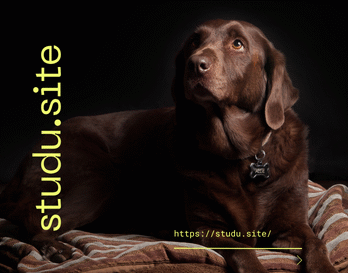Introduction
As a dog owner, you may have been caught by your furry companion giving you the notorious “dog side eye.” That quiet, side-eyed stare—sometimes accompanied by an elevated eyebrow or a tilted head—can leave you wondering what your pup is thinking. Is it sass, suspicion, or something more? The dog side eye is an intriguing part of canine communication that says a lot about your dog’s feelings and personality. In this informative blog post, we’ll discuss what the dog side eye indicates, why dogs exhibit it, and how you can decode and react to this peculiar behavior. Let’s enter the realm of dog side glances!

What Is the Dog Side Eye?
The dog side eye, also referred to as “whale eye” by some in the dog behavior community, is a particular look where a dog tilts its head slightly but maintains its focus on something (or someone) to the side. This look tends to expose the whites of the dog’s eyes, which can result in a dramatic or expressive look. It’s a non-verbal communication that can express a variety of feelings, from playfulness to annoyance. Paying attention to the context of the side eye is important in figuring out what your dog is communicating.
Why Do Dogs Give the Side Eye?
Dogs communicate through body language, and side eye is one of their most revealing devices. These are the most typical explanations for why your dog is giving you the side-eye:
1. Curiosity or Interest
Dogs are innately curious animals. If something catches their interest—such as a snack, a toy, or an unusual noise—they might bestow a side look to gauge the situation without committing fully to a head stare. By this subtle glance, they can monitor their surroundings without becoming tensed up.
Example: Your dog may shoot you a side eye as you unwrap a snack, hoping for a bite without overtly asking.
2. Playfulness or Sass
Other times, the dog side eye is simply attitude on four legs! Some dogs use this look to add some humor or sass to their interactions. You’ll see it in playful situations or when your dog knows they’re being clever.
Example: If you say to your dog, “Time for a bath,” they may give you a side eye as if to say, “Really, human?”
3. Uncertainty or Caution
The side eye may also indicate that your dog is uncertain or wary about something. By not meeting your eye, they’re keeping their options open while sizing up a potential threat or new situation.
Example: A dog encountering a new individual or other dog may side eye to see if they are friendly.
4. Discomfort or Stress
In other instances, side eye (or whale eye) shows distress or stress. When a dog displays the whites of their eyes, it usually means they’re threatened, anxious, or overwhelmed. This is particularly so when side eye is coupled with other stress cues such as tucked tail, ears held flat, or stiffened body.
Example: If someone is hugging your dog too hard, they may give a side eye to show their discomfort.
5. Guarding Resources
Dogs also use the side eye when they’re guarding something precious, such as food, a toy, or their preferred spot on the couch. This look is an unobtrusive method of keeping an eye out for potential “intruders” without advancing to the stage of growl or snap.
Example: Your dog may give you a side eye if you come too close to their bone when they are chewing.
How to Interpret Your Dog’s Side Eye
If you want to know what your dog’s side eye is trying to tell you, you have to look at the context and their body language as a whole. Here are some things to help you decipher the look:
-
Relaxed Body Language: If your dog’s ears are up, their tail is wagging, and their body is loose, the side eye is likely playful or curious.
-
Tense Body Language: A stiff posture, tucked tail, or pinned-back ears paired with a side eye could indicate stress or discomfort.
-
Environment: What’s happening around your dog? Are they reacting to a new person, a loud noise, or something you’re doing?
-
Frequency: How often does your dog provide you with the side eye, or is it a one-time event? Regular side eye in certain contexts could be indicative of an underlying problem, such as anxiety or resource guarding.
By observing these signs, you will get a better idea of how your dog feels and respond accordingly.
How to React to Your Dog’s Side Eye
Once you have determined the cause of your dog’s side eye, you can do something to meet their needs or encourage good behavior. Here’s what to do depending on the reason:
For Playful or Sassy Side Eye
If your dog’s side eye is purely for fun, roll with it! Entertain them with playtime, a treat, or some lighthearted interaction. This builds your relationship and maintains the good vibes.
Tip: Use a cheerful tone and offer a toy or treat to keep the playful vibe going.
For Curious Side Eye
If your dog is giving a side eye out of curiosity, acknowledge their interest. Let them explore the object or situation safely, or redirect their attention if it’s something they shouldn’t focus on.
Tip: Use commands like “look” or “leave it” to guide their behavior.
For Stressful or Uncomfortable Side Eye
If a side eye indicates stress, withdraw your dog from the environment or establish distance between them and the instigator. Don’t force interaction, as this may create increased anxiety.
Tip: Provide a peaceful, quiet area where your dog can unwind. Utilize treats to make positive associations between the trigger and your dog over time.
For Resource Guarding Side Eye
If your dog’s side eye is about protecting their stuff, proceed with caution. Avoid reaching for the item, as this could lead to aggression. Instead, work on training to reduce resource guarding.
Tip: Consult a professional dog trainer for techniques like trading up (offering a higher-value item in exchange) to address resource guarding.
Why Is the Dog Side Eye So Popular Online?
The side eye dog has taken the internet by storm on social media sites such as Instagram and TikTok. The side eyes are captioned with funny or relatable quotes, making them perpetually shareable. The reason behind its popularity is that human-like the side eye seems—pet owners can’t help but attribute their own emotions to their dog’s sassy or shifty stares. And the fact that there is such a wide range of side eye faces, from dramatic to slight, provides meme material.
Training Tips to Stop Side Eye Behavior
Although the side eye is usually innocuous, you might consider working on it if it’s associated with stress or unwanted behavior such as resource guarding. Here are some training tips:
-
Teach “Leave It”: The “Leave It” command is useful to redirect your dog’s focus away from items or situations that cause a side eye.
-
Desensitization: Exposure to triggers (such as strangers or noises) in a managed manner over time to decrease stress-related side eye.
-
Positive Reinforcement: Reward your dog for relaxed, assertive behavior to increase their trust and decrease anxiety.
-
Work with a Trainer: For chronic behaviors such as resource guarding or anxiety, a professional trainer can give personalized advice.
FAQs About Dog Side Eye
1. Is dog side eye the same as whale eye?
Although they are similar, whale eye is more particularly a side eye in which the whites of the eyes are showing, usually associated with stress or discomfort. Not every side eye is whale eye.
2. Why does my dog give me side eye when I am petting them?
Your dog may be feeling discomfort, playfulness, or merely staying aware of their surroundings. Observe their body language to understand why.
3. Can side eye be a sign that my dog is angry with me?
Dogs don’t feel anger like humans do, but side eye might mean irritation, stress, or needing space.
4. How do I get my dog to stop giving side eye?
You can’t get rid of side eye completely since it’s an instinctual behavior. Instead, you should attend to causes such as stress or resource guarding by training your dog.
Conclusion
The side eye of the dog is an intriguing and complex behavior that provides a glimpse into what your dog is thinking and feeling. Whether it’s a teasing poke, a curious gaze, or an expression of discomfort, learning what is behind the side eye can help deepen the bond with your pup. By reading their body language, reacting in kind, and working out any issues that are driving them to the side eye, you can help your dog feel safe and heard. So the next time your dog gives you that signature side glance, you’ll know precisely what they’re saying—and possibly even return a good-natured side eye of your own!
If you want more information on dog behavior or dog training tips, see a professional trainer or a reputable pet resource. Continue to enjoy your dog’s quirky personality, side eye and all!
